
19 minute read
In Conversation with Zoe Dirse csc
DOC Institute Honours Awards In Conversation with Zoe Dirse csc
By Oyin Olalekan
In December 2018, Zoe Dirse csc was honoured with the DOC Institute’s Rogers-DOC Luminary Award, which recognizes industry leaders who inspire upand-coming filmmakers. Award winners were chosen by a jury of documentary filmmakers and producers from across the country. In the lead-up to celebrating the sixth edition of the DOC Institute Honours, the institute profiled the 2018 recipients, including Dirse in an interview shared with Canadian Cinematographer.
DOC INSTITUTE (DI): Considering that you have had such an expansive career, I was very curious about what keeps you going. Have you seen anything recently that inspired you or made you think, “Right, this is why I do what I do”?
ZOE DIRSE (ZD): I can say with true honesty that I’ve been watching some television series that are really quite amazing. In terms of being a cinematographer, I’ve enjoyed Big Little Lies – the first season was directed by Jean-Marc Vallée from Quebec and shot by Yves Bélanger [csc], a terrific director of photography from Montreal. Most of the crew were all French Canadian, and I was watching it thinking, this doesn’t even feel like a series. It feels like a whole feature film. It’s so well crafted andso well put together. That was really lovely to watch and feel really proud to see people that I knew and worked with. I’m very active right now with the Canadian Society of Cinematographers – I’m on the Board of Directors–and it was my mission when I first became a full member to get more women and directors of photography from Quebec. And it makes me happy to see that it’s happened! There are some terrific women that are now full members that I knew and worked with when they were starting out.
DI: It’s great that you’ve been able to see this shift yourself. How else have you seen the industry change throughout the years?
ZD: Well, when I started out there were hardly any women in the industry and I thought, well, what’s wrong with this picture? I was in my 20s and I had finished my degrees at U of T in psychology and education and had studied second wave feminism. There were a few professors who were very influential for me; especially Kay Armatage who I had the privilege of working with on some of her early, early stuff just as a volunteer. And I realized that I would love to be a cinematographer! I loved taking photos and I thought it was such a lovely creative process because I was so enamored with cinema. But then I started looking around and realized, wait a minute, they’re all guys! But I wasn’t turned off by it, it just felt odd. It just didn’t make any sense. In my teaching career too I noticed that a lot of the students would want to be either directors or cinematographers and it was interesting to see that most of the students that wanted to be cinematographers were male. That’s still fairly the case. But I think what’s key is role-modelling – that they see that there are women that do it, have done it, and can talk from experience to the students about that reality.
DI: You’ve spoken a bit about the collaborative nature of working in film and meeting the right people along the
way. What was the value of working in community throughout the course of your career?
ZD: Documentary is my passion and I’ve always had an interest in documentary even in the very early stages of my life when I was working as a teacher in an alternative high school. I would show a lot of documentaries, go to the library, rent a projector and show them NFB films! I was dreaming and thinking, oh I would love to be a part of that process! But the collaborative sense of the community didn’t come until I got to the film board in the early 1980s. The documentaries coming out of that time were so powerful internationally. When we travelled around the world, people would know about our films and we realized what an impact we were making. For me the Film Board really instilled the sense of collaboration and working as a team so that everybody had a voice. There were times I was on my way to the lab and would get pulled in to watch a rough-cut and see different versions of a film that I had worked on, or someone else had worked on, and I could give my opinion and they could listen or not listen. But that sense of collaboration was there; sometimes it just came down to being safe too. When you’re walking backwards in a hallway with a camera on your shoulder, you’ve got to have someone watching your back so you don’t fall over!
DI: Something that we often hear about is the difficulty that emerging filmmakers have breaking into the industry. But as someone who has worked in the industry for so long, one thing I’m curious about is what were the challenges you faced as you started making more films, whether with the Film Board or after that period?
ZD: Well I think ageism in the industry, especially for women, is a definite prejudice. People start to think that you’re not up to it. But you can’t beat experience, and that’s something that I would tell my students all the time. I’d say, “You’re making your first film, and you’ve written a script. Go out and hire that DOP who’s 70 years old and hasn’t shot anything in two or three years. And I’ll bet you they’ll do it for a deal and you’ll get a fantastic looking film!” They look at me and say, “Really?” and I say, “Don’t always hire your best friends. They may not do the best job for you. Especially when you’re starting up because you’re in a learning curve yourself.” It’s also a psychological barrier that you as an older cinematographer have to overcome. You have to get over that yourself, maybe by doing more fitness training and physical training so that you can keep up with the rest of them. The job is very physically and mentally demanding and we need to be more cognizant of that, and especially in documentary you never know the circumstances that you might come across. I can’t remember the last time I climbed a volcano! You have to find your niche so that you can keep going and keep working. A few weeks ago, I was helping out a few friends and we had to film a female director on a big NBC set here in Toronto. They were working with former students, but the students didn’t have the skills to react to sudden changes and make them work. So in this particular case, we were running late in getting into the room to set up the lights. The director wanted me to light from one side, and then the producer came running in to say, “No, no, no, the editor wants you to light from the other side.” And then the director came back in and said, “No, no, no, I need you to light from this side because of my lazy eye!” So everything had to happen within seconds, without batting an eye. I said to my assistant at the time, “I hope I wasn’t too tough on you because of the time,” and she said, “It was amazing to watch you work because it would’ve taken me two hours to set that up, but you did it in minutes!” So there is that advantage that comes with experience: being able to do in minutes what it would take someone else hours to do. Reprinted with permission from the DOC Institute.
Like night and day
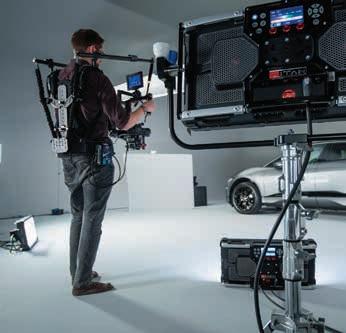
Rotolight’s revolutionary new Titan X2 LED soft light is so refreshingly different, it’s like the dawn of a new era in cinematic light.
Using state-of-the-art RGBWW technology, this sleek and sturdy light panel produces unprecedented brightness and performs superbly across a spectrum from 3,000K to 10,000K. You can electronically control diffusion, focus and spread without gels, and access more than 16 million colours at the push of a button. You can also choose from cool effects like fi re, lightning and TV or customize your own and save them for future use.
A total of 25 patented new technologies went into this amazing fi xture, giving you a suite of industryfi rst features for unparalleled control and ease of use. Available in swan-neck, standard-yoke and pole-mount versions.
ROTOLIGHT TITAN IS AVAILABLE ONLINE AND IN-STORE AT VISTEK
Lighting the Story
My Journey


By John M. Lyden, associate member Photos by Tanner Coon
When I began a short film production in October of 2018, I had considerable anxiety in light of the fact that I would be working with a medium I had very little experience with. I would be the director and director of photography for The Last Domino, a story set in 1978 about two young boys caught up in the distribution of drugs as they struggle to survive in impoverished conditions. Notwithstanding my anxiety and insecurity about shooting an entire project on 16 mm film, a format that I intuited would lend itself well to this short period piece, I felt that I was well prepared for this undertaking thanks in large part to the CSC. I was inspired to shoot this project after attending the CSC Lighting Faces workshop that was led by Carlos Esteves csc and George Willis csc, sasc in October of 2018. Carlos and George went out of their way to tailor

their approaches to each individual skill level and knowledge base among the diverse group of participants. As a relatively young cinematographer, I was very appreciative of this and grateful to be in the company of such experienced, generous artists. In the two-day workshop, I was refamiliarized with important cinematographic concepts, such as the inverse square law and its implications in light intensity, directionality and evenness, the importance of crafting a thematically resonant aesthetic within the framework of the story and the locations, as well as the versatility of light modifiers in lighting faces. The staggering number of lighting and camera tools that we have available to us can sometimes dilute our vision and divert our attention away
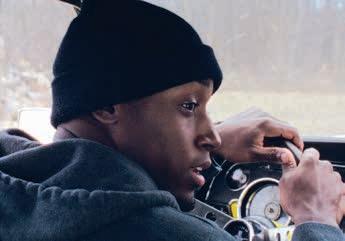

Clockwise from top right: Actor Pierre Sandaire. Actor JR Richards. Actor Lee-Roy Tau in both bottom photos.


from the most important elements to consider. I was so thankful to have so much information distilled into a palatable presentation that helped clarify for me what my priorities should be as a DP. As I worked on lighting exercises with my fellow participants in the workshop, I became increasingly aware of how less is often more with regard to lighting and composition. Some of the cinematographers in the workshop crafted beautiful yet subtle lighting schemes by utilizing relatively few lights. They achieved beautiful three-dimensionality by only using a couple of lighting fixtures and augmenting the look with light modifiers, camera placement and colour contrast. It was enlightening and inspiring for me to watch these experts – such as the incredibly talented Mark Foerster csc – shape their look with great care and restraint. Lighting is an art in and of itself and is far more important than which camera system you plan to employ. All too often I have been guilty of focusing excessively on the latter. Good lighting has many layers, quite akin to the most meaningful paintings and photographs. The colours, gradations, and planes of light and shadow collectively make for a rich visual tapestry that lends additional layers of sub-textual and textual meaning to a picture. With my heightened appreciation and awareness of this important concept, I began to visualize and shape the look of my own film in the Lighting Faces workshop. After returning home from the inspiring CSC workshop, I made the decision to take a chance and shoot The Last Domino on 16 mm film, partly because it would force me to improve my lighting skills, but also because I felt it was appropriate for the story I was telling. I wanted to create a sense of naturalism and impart a documentary feel in this film. I have been greatly influenced by the cinematography of Yves Bélanger csc


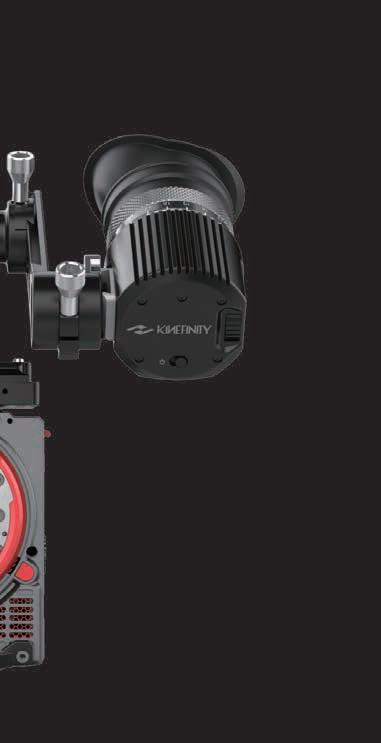

and Ronald Plante csc in the HBO series Sharp Objects. I wanted to use a minimalist approach to the lighting and rigging to give the actors as much freedom as possible, as well as challenge myself as an artist and technician. I used a powerful, indirect lighting source to provide a strong base for exposure. One of the drawbacks of using film is that you need a lot of light to get an acceptable picture. Compounding this challenge was the fact that I only wanted practical sources for illumination, with very few supplementary lighting tools. Also, in order to eliminate chromatic aberration and get acceptable image quality, the lens on my Canon Scoopic M had to be stopped down to at least T.4. These factors made for a very challenging production that forced me to be very deliberative and thoughtful in how I lit and composed. Additionally, I had to be cognizant of the fact that I only had 10 100-foot spools of film, which would provide our team with roughly 30 minutes of recording time, thus necessitating an extremely conservative and economical approach to my storytelling. Once I achieved a base exposure of T2.8 for the interior scenes by bouncing a powerful HMI off a ceiling or a back wall, so long as it was not colour tinted, I was able to primarily rely on natural light and practical sources, such as desk lamps, to place emphasis on the most important compositional elements. I kept referring back to Carlos’s wise words on the importance of tailoring your lighting approach to suit the individual actor/ subject’s facial features and head shape. I often made use of a small LED panel wrapped in two layers of diffusion as an eye light. It produced beautiful results when placed right over the camera and dimmed to 10 per cent intensity. The shape and texture of the key sources were considered in the context of the story and each actor’s unique features. Because I opted to use Kodak 250D Vision 3 stock, I knew the grain in the shadows would be aesthetically pleasing even in some dreary, dark scenes. I felt like a fish out of water on the first day of filming, as I could no longer rely on a waveform monitor or histogram,
Director/cinematographer John M. Lyden.
which have essentially become crutches for too many of us. Nor did I have the luxury of previewing looks and LUTs with a DIT, causing episodic insomnia as I anxiously awaited the return of my hard drive from the lab. All I could use as gauges of my efficacy were my incident and spot meters and my eye. Looking through the eye piece of the Scoopic only provided me with a soft approximation of the image we were capturing, so my depth of field calculator became my compass on this arduous cinematographic voyage into deeper waters. I used colour contrast in coordination with my production designer to help create separation between the actors and the background, and accentuate the brothers’ isolation and loneliness. My crew and I had spent weeks reviewing the story and letting our understanding of the narrative and its themes inform our lighting decisions and compositional structure. I did not have the film pushed or pulled at the film lab. I opted for a 2K HDR flat scan to give us maximum dynamic range

and latitude in the grade. Through the use of power windows in Resolve, my colourist and I were able to make selective exposure and colour adjustments to various parts of the frame and really dial in a look that was built off of my lighting decisions and original vision. I was amazed by how much detail we could bring out of the shadows and retrieve from blown highlights, hence strengthening my passion for film and all that it has to offer as far as colour and tonality are concerned. The final cut of The Last Domino far surpassed my expectations and is one of my best works to date. I feel that I owe a debt of gratitude to Carlos, George and the other active leaders in the CSC for their deep commitment to providing other CSC members with the tools and knowledge they need to thrive in this industry. My story is but a microcosm of a broader movement within the CSC: masters inspiring and encouraging young artists to be bold creatively while honouring and using the fundamental principles upon which the art of cinematography was built.

gimbal shot VFX scene streaming series environment department documentary shot sitcom production phase build monitoring setup commercial production music video great idea movie department + documentary monitoring setup shot hand held scene wireless fiz crane project steadicam setup camera assistant genre cinematographer market workflow operator Truly ecosystem ideal for every shooting situation director shot post pipeline production phase build hand held scene department Canadian Cinematographer - October 2019 streaming series aerial shot budget www.panavision.com • 23 wireless fiz
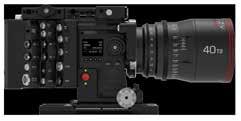
csc Credits: Carlos Esteves


Presented by Evans Brown and Jeremy Benning csc Saturday, September 14, 2019 – Toronto
Modern lighting meets creative consciousness within the rapid pace of modern-day filmmaking. In this seminar, Evans Brown and Jeremy Benning csc, co-DPs on the web television series The Boys, led a deep dive into the practicalities of the colour of light, how to achieve a look for a show through a complementary colour lighting approach and how this translates on screen. Using examples from their work on the AT&T TV series Condor, the DPs led participants through the practical experience of mixing lighting sources, shifting the spectral curve of the camera sensor, and folding this all into the LUT and on-set grade. Brown and Benning offer a summary of the concept, its genesis and its application:
Brown: The concept of lighting by colour is just a coming together of three basic steps: one being changing the dynamic of the spectral curve in the camera by putting a glass coloured filter on the lens, then complementing that colour on the lens. Let’s say it’s cyan, you would neutralize skin tone by adding the complementary colour red. And then the third part of that is what the onset colourist brings to it as far as finding the gap in the two spectral curves being created on the camera and with lighting to create silver. I was a gaffer for 20 years before I transitioned to a fulltime DP career about 10 years ago, and 20 years ago I gaffed the HBO series The Wire, which was shot in Baltimore. In the third season of that show, I was able to shoot a lot of second unit. We did a lot of night exteriors on that show, and Baltimore – like many cities at the time – was lit with sodium



vapour lights. And that can be cool looking, but it’s also very extreme, so I had this idea that I presented to the DP of the show Eagle Egilsson, and said, “Hey, I want to try something. I want to put 30 or 40 cyan on the lens, mellow out the sodium vapour so it goes less reddish orange, and then where we need skin tones to become neutral, I’ll counteract it with a little red gel.” We didn’t have all the wonders of RGB colour mixing at the time, so it was just a matter of putting red gels on the lights where we wanted to neutralize the skin tone. And that was sort of the start of it. I’ve been playing around with this for 20 years. Before The Boys, I shot an AMC series called Halt and Catch Fire, and we did it a lot on that show too. The technique is kind of meant to give a little bit of creative control back to the cinematographer as far as post goes. It kind of lets you do dynamic grading on set like you would do in a DI suite doing final colour. Because if producers get in the colour suite and they try to push things too far one way or too far another way colour wise, they can lose skin tone. So it allows a little bit of control. What


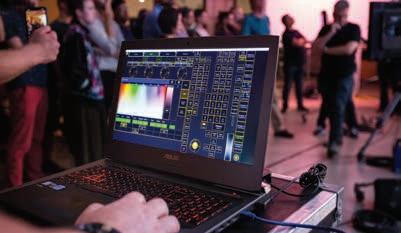
you give them is kind of what you get. Benning: As DPs, we’re working under these tight time frames all the time. You have to have something that looks good, is unique and appropriate for the look of the show, and you have to do it quickly. When you’re rushed like that, it’s very hard to achieve that, so having this extra technique that you can do relatively quickly and see it on the monitor right away allows you to kind of play a little more in a time frame that’s really tight. A complete video of the seminar is available on the CSC website: csc.ca



